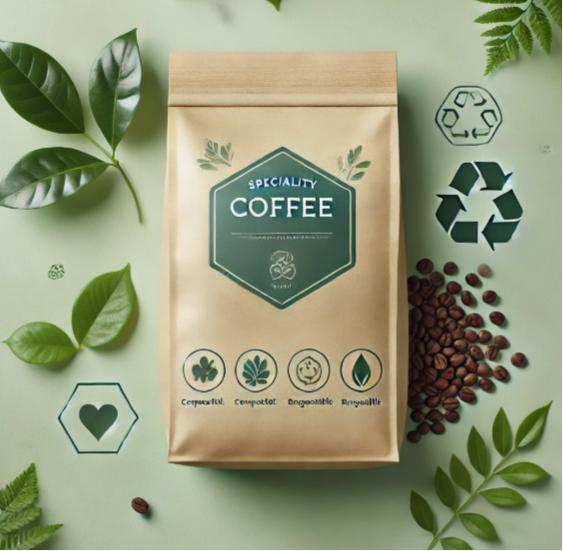Specialty Coffee Packaging: How It’s Shaping Premium Packaging Trends
Introduction
The rise of specialty coffee packaging is transforming the coffee industry by elevating branding, sustainability, and functionality. Consumers now expect more than just great coffee—they seek unique, high-quality packaging that reflects the coffee’s origin, ethical sourcing, and artisanal craftsmanship. With the increasing demand for eco-friendly and premium coffee packaging, brands are adopting innovative solutions that enhance both the aesthetic appeal and the sustainability of their products. Luxury coffee packaging, sustainable coffee packaging, and custom coffee packaging are among the most sought-after trends in the industry.
1. The Evolution of Specialty Coffee Packaging
- From commodity to premium experience: How specialty coffee shifted the focus to high-end packaging.
- Consumer perception: The role of aesthetics, materials, and design in influencing purchase decisions.
- The importance of storytelling: Using packaging to convey the coffee’s journey from farm to cup.
- Brand differentiation: How unique packaging enhances brand recognition and loyalty.
- Cultural influences on packaging: How different coffee-drinking cultures affect packaging styles and expectations.
2. Key Trends in Specialty Coffee Packaging
Minimalist and Elegant Designs
- Premium coffee brands are adopting clean, minimalist aesthetics to convey quality and sophistication.
- The use of monochrome palettes, bold typography, and sleek packaging structures appeals to modern consumers.
- Tactile elements: Embossed textures and matte finishes enhance the premium feel of coffee bags and boxes.
Eco-Friendly and Sustainable Materials
- Recyclable coffee bags made from kraft paper, aluminum-free materials, and compostable films.
- Reusable coffee packaging such as tin cans and glass jars, reducing single-use waste.
- Compostable and biodegradable coffee pods replacing traditional plastic-based capsules.
- Plant-based and algae-derived bioplastics as sustainable packaging alternatives.
- Zero-waste coffee packaging: Brands shifting towards waste-free packaging solutions.

Innovative Packaging Formats
- Flat-bottom pouches with resealable zippers enhance convenience and freshness.
- Metallic tin containers used for high-end specialty coffee.
- Single-serve compostable capsules for premium, sustainable convenience.
- Smart portion-controlled packaging: Pre-measured coffee doses to reduce waste.
- Vacuum-sealed coffee bags: Improving freshness while maintaining aroma.
Functional Advancements
- One-way degassing valves to preserve coffee freshness while preventing oxidation.
- UV-resistant packaging protecting coffee from light exposure.
- Vacuum-sealed and nitrogen-flushed coffee bags to extend shelf life.
- Temperature-adaptive materials: Packaging that responds to environmental changes to protect coffee integrity.
- Aroma-lock technology: Advanced sealing methods to preserve the coffee’s natural fragrance.
3. The Impact of Sustainability on Packaging
- Sustainable Coffee Challenge – A global initiative supporting sustainable coffee practices.
- Rainforest Alliance – Certification ensuring responsible sourcing and environmental protection.
- Consumer demand for ethical sourcing and eco-conscious packaging.
- Carbon-neutral packaging solutions: How brands are reducing their environmental footprint.
- The role of certifications: Fair Trade, Rainforest Alliance, and BPI compostability standards.
- Circular economy approaches: Brands investing in recyclable and refillable packaging programs.
- Waste reduction strategies: How companies are cutting down packaging waste in the supply chain.
- Compostable coffee packaging: How new materials are being developed for eco-conscious brands.
4. Digitalization and Smart Packaging
- Blockchain for Coffee Transparency – How blockchain is enhancing supply chain traceability.
QR Codes and Augmented Reality (AR)
- Interactive packaging using QR codes to provide consumers with details on coffee origins, brewing guides, and sustainability efforts.
- Augmented reality labels that showcase brand stories and behind-the-scenes processing methods.
- Near-field communication (NFC) chips embedded in packaging for enhanced customer engagement.
- Digital tracking systems: Allowing customers to follow the coffee journey from farm to cup.
Blockchain for Transparency
- Ensuring traceability and authenticity by allowing consumers to verify sourcing and ethical standards.
- Coffee supply chain transparency: Tracking coffee beans from farm to cup with blockchain solutions.
- Smart contracts in coffee trade: Automating payments and transactions for sustainable sourcing.
Smart Freshness Indicators
- Temperature-sensitive labels that inform consumers if the coffee has been stored at optimal conditions.
- Freshness tracking sensors that detect oxidation levels in coffee bags.
- AI-driven predictive freshness monitoring to optimize inventory management.
- CO2 emission trackers: Monitoring packaging sustainability impact.
5. Future of Premium Coffee Packaging
- Biodegradable Packaging Innovations – Exploring the latest eco-friendly packaging solutions.
Customization and Personalization
- Digital printing enabling small-batch, customized coffee packaging tailored for specific regions or seasons.
- Limited-edition designs that appeal to collectors and coffee enthusiasts.
- Subscription-based packaging: Personalized coffee bags for monthly deliveries.
- Branded coffee packaging solutions: Creating distinctive packaging for specialty brands.
Luxury Packaging Innovations
- Foil stamping, embossing, and textured finishes enhancing premium feel.
- Handcrafted and artisanal packaging using sustainable natural materials.
- Magnetic closure boxes and rigid gift packaging for exclusive coffee sets.
- Sustainable luxury: Premium materials with a reduced carbon footprint.
- High-end coffee gift packaging: Special edition sets designed for premium coffee consumers.
Emerging Market Trends
- Rise of refill stations: Encouraging customers to bring reusable coffee containers.
- Hybrid packaging solutions: Combining multiple sustainable materials for optimized performance.
- High-tech protective coatings: Ultra-thin edible barriers to enhance freshness.
- 3D-printed coffee packaging: Exploring futuristic packaging designs.
Conclusion
The future of specialty coffee packaging lies in a balance between luxury, sustainability, and functionality. As consumer preferences continue to evolve, brands must innovate to create packaging that not only preserves coffee freshness but also enhances the overall experience. With the rise of eco-conscious and technologically advanced solutions, the specialty coffee industry is shaping the future of premium coffee packaging in ways that meet both aesthetic and environmental demands.
